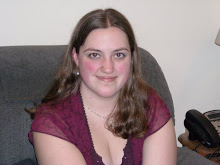Understanding the politics involved in an aspect of public history (the founding of a society, creation of a museum house, a movement, etc.) and how they relate to contemporary society is important and valuable. To go off of Patrica West and Mary Pat Brady (from Nancy Raquel Mirabal's article), spaces are not neutral, they are infused with meanings. However, one of my concerns with politics and public history is misrepresenting or skewing historical events/movements to advance a political agenda. While I recognize some of this stems for personal encounters, this wariness I think has merit. In Mirabal's article, I struggled with understanding the Mission District in a public historical context. The closest I could connect the gentrification of Latina/o and public history is the local meetings, discussions, and activism that happened between Mirabal's study. But I cannot help think of this as a sociological or political study more than a historical matter. That being said, her image of an historian as an activist is a potential growth area for public historians.
In that idea (of potential growth) Cary Carson, and to some extent Eric O'Keefe, further discuss what we have mean hinting/talking about throughout our course: an interaction of history and people and creating a 'shared authority'. Though I am by no means ready to support Plan B Part I (somehow I do not think Latino styled telanovas on history is the future of public history and museums), I do believe there is merit in what Carson goes on to say. The delicate balance between incorporating technology and maintaining a usable historical past is a contemporary problem, one that people have been struggling to solve for the past decade. Yet it is reflective of the larger issue of involving the public in 'teaching' them a particular history. Perhaps allowing cell phones to take photos and video is not the best choice (copy right, imaging policies, damage to objects or even to people), but I give him credit for a creative solution.
Harrisburg, PA's idea of auctioning off the (misused) use of public funds had an unintentional (in my opinion) affect of gaining the attention of a larger public. Maybe for the Western objects, maybe for seeing what their money was spent on, maybe simply because it was an unusual auction, but either way the government captured the attention of a public. Though I do not think O'Keefe would suggest an auctioning off of most museum objects (Carson might though), the larger idea for us is thinking outside of the box in an effort to do something with (for?) people.
Even though I do not completely agree with all the positions of these authors, the larger theme of creating or looking at nontraditional methods of civic engagement. Perhaps Carson's ideas are not feasible but where his thoughts are coming from and responding to are important questions/ideas public historians need to address.
Subscribe to:
Post Comments (Atom)

No comments:
Post a Comment